I have data about response time at web site according users that hit at the same time.
For example:
10 users hit the same time have (average) response time 300ms
20 users -> 450ms etc
I import the data in R and I make the plot from 2 columns data (users, response time).
Also I use the function loess to draw a line about those points, at the plot.
Here's the code that I have wrote:
users <- seq(5,250, by=5)
responseTime <- c(179.5,234.0,258.5,382.5,486.0,679.0,594.0,703.5,998.0,758.0,797.0,812.0,804.5,890.5,1148.5,1182.5,1298.0,1422.0,1413.5,1209.5,1488.0,1632.0,1715.0,1632.5,2046.5,1860.5,2910.0,2836.0,2851.5,3781.0,2725.0,3036.0,2862.0,3266.0,3175.0,3599.0,3563.0,3375.0,3110.0,2958.0,3407.0,3035.5,3040.0,3378.0,3493.0,3455.5,3268.0,3635.0,3453.0,3851.5)
data1 <- data.frame(users,responseTime)
data1
plot(data1, xlab="Users", ylab="Response Time (ms)")
lines(data1)
loess_fit <- loess(responseTime ~ users, data1)
lines(data1$users, predict(loess_fit), col = "green")
Here's my plot's image:

My questions are:
How to draw my nonlinear function at the same plot to compare it with the other lines?
example: response_time (f(x)) = 30*users^2.Also how to make predictions for the line of function
loessand for my function and show them to the plot, example: if I have data until 250 users, make prediction until 500 users